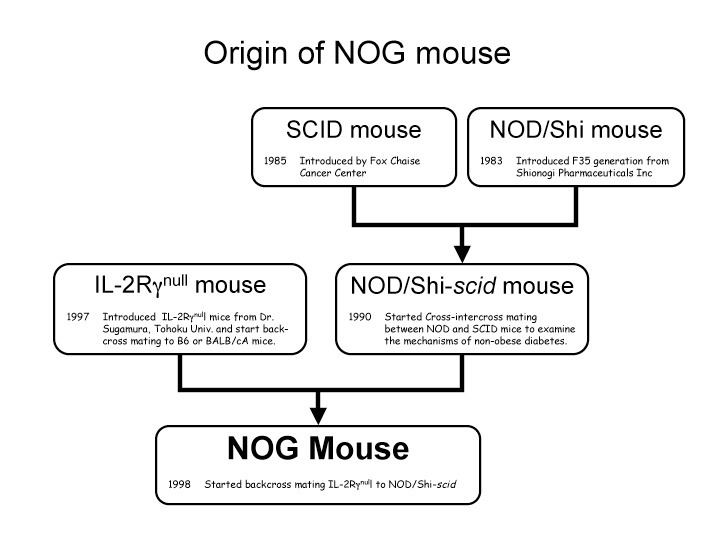 | ||
A NOG (NOD/Shi-scid/IL-2Rγnull) mouse is a new generation of severely immunodeficient mouse, developed by Central Institute for Experimental Animals (CIEA) in 2000. The NOG mouse accepts heterologous cells much more easily compared with any other type of immunodeficient rodent models, such as, nude mouse and NOD/scid mouse. Thus, the mouse can be the best model as a highly efficient recipient of human cells to engraft, proliferate and differentiate. This unique feature offers a great opportunity for enhancing therapy researches of cancer, leukemia, visceral diseases, AIDS, and other human diseases. It also provides applications for cancer, infection, regeneration, and hematology researches.
Contents
Origin
The NOG mouse was generated in CIEA in 2000 by back-cross mating of C57BL/6J-IL-2Rγnull mouse that was originally developed by Kazuo Sugamura, a professor of Tohoku University, to NOD/Shi-scid mouse that was developed in CIEA.
Characteristics
NOG mouse has multiple immunodeficiencies that are principally derived from three strains of mice: 1) NOD/Shi inbred strain, 2) SCID, 3) IL-2Rγnull. These include:
